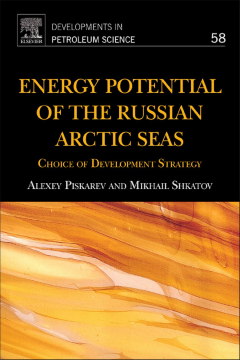
Additional Information
Book Details
Abstract
The structure of sedimentary basins of the Russian Arctic Seas is studied and illustrated by a number of maps, cross-sections and geophysical models. The calculated density models of the Earth crust illustrate the deep structure of the main blocks of the crust. Five major gas-condensate and gas fields are discovered here: three (Shtokman, Ludlov, Ledovoe) in the Barents and two (Leningrad and Rusanov) in the Kara Sea.
Geological and geophysical characteristics of the Russian Arctic Sea sedimentary basins allow an estimation of their hydrocarbon potential by comparison with the known world analogues.
Total potential resources of giant deposits of hydrocarbons in Russian Arctic Seas are estimated at 470 billion barrels of oil equivalent. The richest resources are the Kara Sea and Laptev Sea. Less rich is Barents Sea. The relatively smaller contribution to the overall estimation of the resources makes the resources of East-Siberian Sea and Chukchi Sea.
Development the energy capacity of the continental shelf of Russia can play a stabilizing role in the dynamics of oil and gas production in the period 2010-2020. A key role in developing the capacity of the Arctic shelf oil and gas play is the innovative technology in exploration, production and management of the relevant investment projects. World offshore experience indicates that the combination of these factors is achieved through the formation of international firms and organizations.
- Comprehensively assesses the potential oil and gas resources in sedimentary basins within the Russian sector of the Arctic Ocean
- Describes the economic and legal challenges to the development of offshore fields in Russia
- Explores possible ways and timing to maKe these hydrocarbon resources available to the global market
"Piskarev and Shkatov recommend here that development of the continental shelf take on a higher priority and make extensive use of information analytical systems (IASs). This volume is primarily oriented toward a scientific and technical audience, but also touches upon economic and legal concerns." --Reference and Research Book News, December 2012
